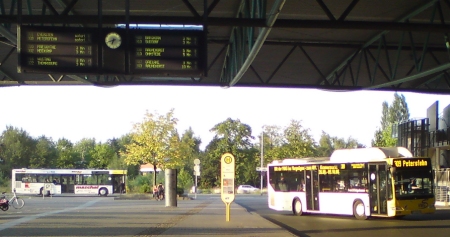3. GPS Applications
Vehicle Tracking with GPS
Everyone who likes watching crime movies with action-packed chase scenes is familiar with vehicle tracking using a so-called homing device. The homing or tracking device is attached to a car and the exact position of the car is monitored on a computer screen.

Another application of GPS is monitoring the status of cargo deliveries, such as in shipping. Some shipping companies regularly inform their customers about their shipping routes in order to assure clients that their cargo are taking the shortest and fastest way to their destination.
How does vehicle tracking work?
The homing device can be attached on any part of the vehicle and can be traced with an accuracy of up to 5 m. GPS-tracking works with an ordinary SIM card which is installed in the homing device.
When you dial the number of the homing device, it sends an SMS indicating its current position in longitude and latitude to your mobile phone. You may then enter these data in Google Earth, Google Maps or in a route finder software. The easiest way is entering the data directly in a PDA (personal digital assistant) or in a mobile phone equipped with the proper monitoring or surveillance software.
Dynamic Passenger Information System
Most of you may be familiar with the Passenger Information System found at bus stations or terminals showing the departure time of each particular bus.
Sometimes, when you look at the time table, you read a different departure time than that
indicated on the Passenger Information System. How could this be? How can the Passenger Information
System know exactly that the bus is departing in, let's say: 3 min?
Where does the information for the next departure time come from?
Vehicle tracking with GPS makes this possible. It localises the vehicle's current position and transmits the information as a radio signal to the control center. Based on this information, the the arrival time of the bus at the different stations is computed at the control center and transmitted to each particular station or terminal.

